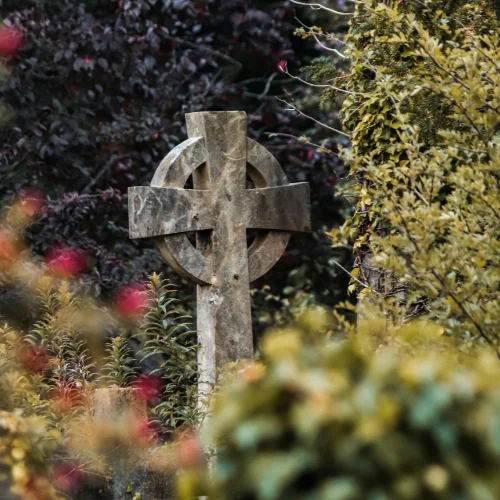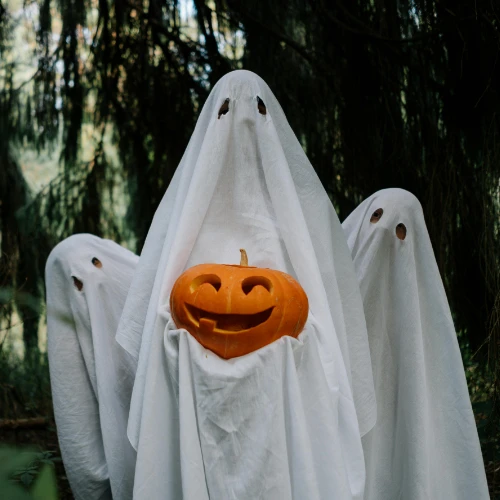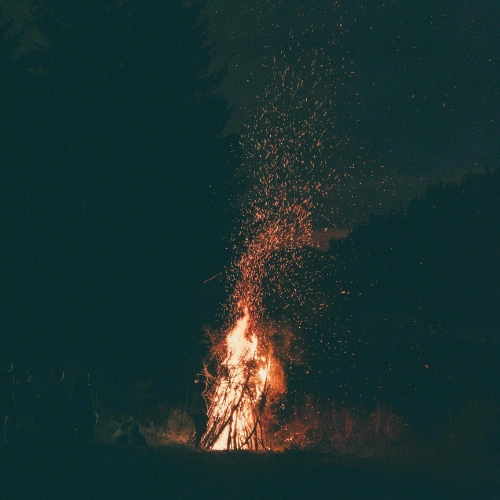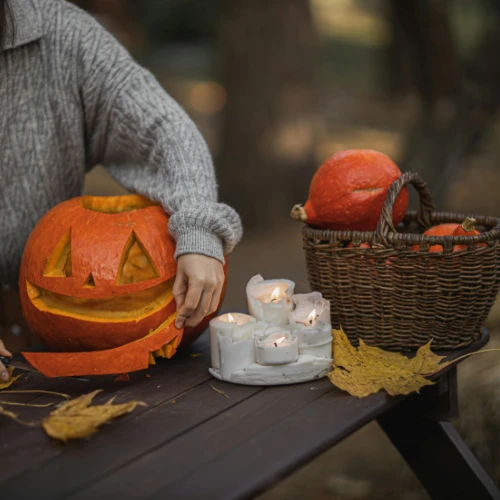History of Halloween (Samhain) in Ireland
Samhain in Ireland, an ancient Celtic festival celebrated on October 31st, is where our modern Halloween comes from. In this article, we’ll explore the history and meaning of Samhain in Ireland, looking at the traditions and beliefs that have shaped this holiday over the years.
We’ll cover the importance of Samhain in Ireland as the Celtic New Year, why people dressed up as spirits, and the role of bonfires in the celebrations. We’ll also talk about the practice of carving turnips into lanterns, which later became the jack-o’-lantern, and the rituals surrounding spirits visiting homes.
By understanding these traditions, we’ll see how they have evolved into the Halloween we know today.
Table of Contents
Samhain (Halloween)
Samhain (pronounced “Sow-in”), celebrated on the 31st of October, is one of the most ancient and significant festivals in Irish history. It marks the end of the harvest season and the beginning of winter when the Celts believed that the boundary between the world of the living and the dead became blurred.
This festival, deeply rooted in pagan tradition, originates from what we now know as Halloween. The customs, rituals, and beliefs associated with Samhain in Ireland have been passed down through generations, transforming and evolving into the modern holiday but still retaining much of the ancient spirit.
The Significance of Samhain in Ireland

In ancient Ireland, Samhain was more than just a festival; it was the Celtic New Year. This was a significant part of the year, where the transition from summer’s light to winter’s darkness was keenly felt.
It was believed that this night, the veil between our world and the Otherworld was at its thinnest, allowing excellent and evil spirits to pass through.
The Celts viewed this as a time of great power but also of great danger. It was a night when the spirits of the dead, gods, and fairies could interact with the living.
This belief that the barrier between the worlds of the living and the dead was thin during Samhain in Ireland was the foundation for many emerging customs and traditions.
The people of ancient Ireland saw Samhain as a time to honour their ancestors and seek their guidance and protection for the harsh winter months ahead.
However, it was also a time to be wary of evil spirits that could cause harm if not properly appeased.
Dressing as Spirits: A Tradition of Disguise

One custom of Samhain in Ireland that lives on today is the practice of dressing up in costumes. This tradition has evolved into the modern practice of wearing Halloween costumes.
In ancient Ireland, the Celts would dress as spirits, often donning animal skins and masks, to disguise themselves from the wandering spirits that roamed the earth on Samhain night.
The idea was that if a person looked like a spirit, the real spirits would leave them alone, mistaking them for one of their own. This practice was both a form of protection and a way to pay homage to the spirits.
The disguises also played a role in the custom of “mumming” or “guising,” where people would go door-to-door, performing songs, reciting verses, or playing tricks in exchange for food or offerings.
This practice is the precursor to modern-day trick-or-treating, where children go from house to house in costumes, asking for sweets.
For information on Irish Heritage, make sure to read my article on my comprehensive guide to Irish Myths and Legends.
Irish Bonfires: A Sacred Ritual

Bonfires were a central part of Samhain in Ireland celebrations. These fires were not merely for warmth or light but deeply symbolic. The Celts believed that fire had purifying and protective properties.
On Samhain night, massive communal bonfires would be lit on hilltops, such as the Hill of Tara and the Hill of Tlachtga, sacred sites in Ireland.
The flames were thought to ward off evil spirits and provide a beacon for the friendly spirits of ancestors.
Cattle, a vital part of the economy and sustenance for the Celts, were driven between two fires as part of a ritual of purification and protection.
People would also take embers from the communal bonfire back to their homes to relight their hearths, symbolizing the light and warmth sustaining them through the cold winter months.
Carving Lanterns: The Origin of the Jack-o’-Lantern

Another tradition that has survived through the centuries is the practice of carving vegetables into lanterns during Samhain in Ireland.
In ancient Ireland, people would hollow out large turnips, gourds, or mangelwurzels (beets), carving faces into them to create lanterns.
These lanterns were placed in windows or on doorsteps to ward off evil spirits and to guide the friendly spirits of ancestors back to their homes.
The faces carved into these turnips were often grotesque or fearsome, meant to scare away malevolent spirits. When Irish immigrants brought the tradition to America, they found that pumpkins, native to the New World, were easier to carve than the traditional turnips.
Thus, the jack-o’-lantern as we know it today was born, becoming one of the most iconic symbols of Halloween.
Samhain Spirit Visitors
During Samhain, the Celts believed that the spirits of the dead could return to their earthly homes. Families would set places at their tables and leave food and drink out for these visiting spirits, a practice known as the “dumb supper.”
This was both an act of reverence and a way to ensure that the spirits would bless and protect the household in the coming year.
In some regions, people would also leave offerings of food at their doorsteps or in the fields to appease wandering spirits and fairies, hoping to avoid any tricks or mischief.
The belief was that if these spirits were not correctly honoured, they could bring misfortune upon the household.
The Legacy of Samhain in Modern Halloween
The customs of Samhain have endured centuries of cultural change, blending with Christian practices and eventually giving rise to Halloween as we know it today.
Despite the evolution of the holiday, the essence of Samhain remains—a time to remember the dead, recognize the changing of the seasons, and acknowledge the thin boundary between this world and the next.
Halloween has become a celebration enjoyed by millions worldwide. Still, its roots in the ancient Celtic festival of Samhain remind us of Ireland’s deep, mystical traditions.
The bonfires, costumes, carved lanterns, and offerings to spirits all echo a time when people lived in harmony with the cycles of nature, recognizing the power and mystery that the night of Samhain held.
Why not try some Traditional Halloween Recipes for an authentic Samhain celebration?
When is Halloween in Ireland?
Halloween is celebrated on October 31st in Ireland. It was seen as the last day of the Celtic Calander. It was seen as the end of the harvest and the start of winter. It was a time when the threshold between the physical and spiritual world was thin.
How is Samhain celebrated in Ireland?
Samhain is celebrated historically with bonfires, people dressing up as spirits to keep evil spirits away. A lantern carved from a root veg was left outside the home to welcome family spirits to the table where an empty space was always set. In more modern times kids dress up and go trick or treating from house to house.
How do Irish people say Samhain?
Samhain is pronounced Sow-in. It is never pronounced sam-hane like they do in the movie Halloween.
Do they celebrate Halloween in Ireland?
Halloween originated from Ireland as a pagan festival known as Samhain. In Ireland, we celebrate it every year by dressing up like spirits and going trick-or-treating.
